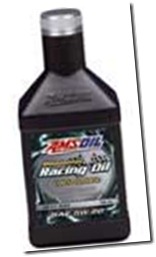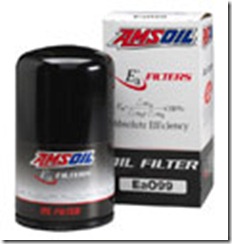Buy Amsoil Now by visiting our main site.
Recently FORD came out with new press releases dismissing the validity of changing oil every 3,000 miles. We’ve all heard the saying “Change your oil every 3,000 miles.” If you hear it enough you start to believe it; that is what ads do. If you are using the same oil as your grandpa, you should be changing it but today we have better alternatives. Lubrication technology has experienced the same advances as cars, motorcycles, and other technology. Synthetic oil is becoming more and more popular, with many high performance cars coming from the factory with synthetic oils installed when new. Some cars that are delivered with synthetics include; Acura RDX, Aston Martin, Bentley, Cadillac, Corvette, Mercedes AMG, Mercedes SLR, Mitsubishi Evolution, Solstice GXP, Porsche, Saturn Red Line, Dodge Viper, and more. Educate yourself and you’ll learn that Amsoil synthetic oil beat all others in testing. Many manufacturers are also promoting extended drain intervals, something Amsoil has been advocating for decades.
heard the saying “Change your oil every 3,000 miles.” If you hear it enough you start to believe it; that is what ads do. If you are using the same oil as your grandpa, you should be changing it but today we have better alternatives. Lubrication technology has experienced the same advances as cars, motorcycles, and other technology. Synthetic oil is becoming more and more popular, with many high performance cars coming from the factory with synthetic oils installed when new. Some cars that are delivered with synthetics include; Acura RDX, Aston Martin, Bentley, Cadillac, Corvette, Mercedes AMG, Mercedes SLR, Mitsubishi Evolution, Solstice GXP, Porsche, Saturn Red Line, Dodge Viper, and more. Educate yourself and you’ll learn that Amsoil synthetic oil beat all others in testing. Many manufacturers are also promoting extended drain intervals, something Amsoil has been advocating for decades.
Most European manufacturers suggest 9,000 mile drain intervals and are considering doubling it. Big Oil is the main remaining supporter of 3,000 mile oil changes; it helps them sell more oil. Unnecessary oil changes use 300-400 million gallons of oil annually, and over 1.5 billion dollars annually in U.S. consumer costs. There is also environmental impact; all that old oil has to go somewhere The solution? Use a quality synthetic oil like Amsoil and extended drain intervals of 7,500, 25,000, or 35,000 miles as recommended by Amsoil. This will reduce your oil changes from 4-5 per year to 1-2 per year. The 3000-mile oil change is a conservative approach to maintaining your vehicle that, according to General Motors, dates back to 1968. It’s also an oil change interval that the automotive oil change industry and quick lube shops continue to encourage because it helps them sell more oil. Automobile manufacturers cite modern oil and engine technology as the reasons why oil change intervals can be extended. Some of these reasons include better oil filters, better air filters, and the availability of oil analysis to offer the benefit of the extended drain intervals.
Understanding the Oil Life Monitoring System
Many new cars also have a oil life monitoring system. This does not really monitor the oil at all, it simply times how long the engine has been running and calculates suggestions for oil changes. There is no actual oil condition sensor. No chemical analysis of the oil takes place. In fact, you could drain the oil and replace it with any fluid and the oil change monitor would have no way of knowing it. Additionally, the oil life monitor does not check how well your oil filter is filtering the oil in your system. Contaminated oil is just as, if not more, harmful than oxidized motor oil. The bottom line is that an oil life monitor is a useful tool that should be used in conjunction with common sense and good judgment. Whether or not you have an oil change monitor, if your car is still under warranty, continue to follow the car manufacturer’s recommended oil change intervals. Face it, the auto dealers also want to train you to bring your car back to them on a regular basis so they can continue to upsell you more products. Extend Your Oil Changes by Upgrading to Amsoil Synthetic Oil Synthetic oil does not impact any car warranty and you are free to pursue extended drain intervals if you want to enjoy the convenience of fewer oil changes. You can extend your oil change intervals by upgrading to synthetic oil. This will reduce the number of oil changes saving you time and money, and reducing the amount of oil purchased and disposed. There are a number of quality Amsoil products available to choose from. Most lubricant manufacturers will give a recommended number of miles you can drive between oil changes under normal conditions. The number of miles you can allow between oil changes will depend on the way you drive and the oxidation stability (useful oil life) of the motor oil.
Upgrade Your Oil Filter with Your Upgraded Oil
If you elect to upgrade your motor oil, you should also upgrade your oil filter. Low quality filters are often made with the 3,000 mile interval in mind and may go into ‘bypass’ mode shortly thereafter. Amsoil carries a complete line of filters that include the original AMSOIL EaO Filters that are guaranteed for 25,000 miles or one year, whichever comes first, when used in conjunction with AMSOIL synthetic motor oil in normal service. Amsoil also carries MANN filters (cheaper than BMW) and Donaldson filters.




